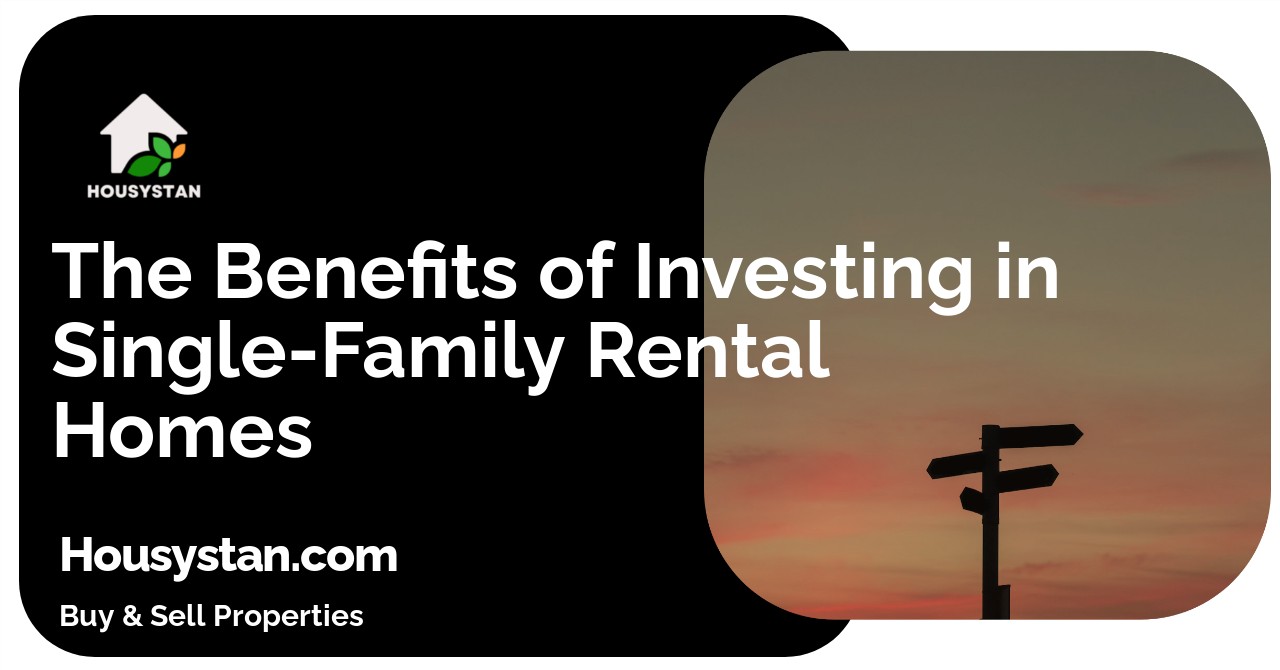The Benefits of Investing in Single-Family Rental Homes
Read latest blogs and articles from Housystan

The Information mentioned here was last updated on:
28/12/2025The Benefits of Investing in Single-Family Rental Homes
Investing in single-family rental homes has become an increasingly popular strategy for both seasoned and amateur investors. The real estate market's steady growth, coupled with the mounting demand for rental properties, presents a compelling opportunity. This blog post explores the many benefits of investing in single-family rental homes, outlining why it’s a smart financial move for a diverse audience.
What Are Single-Family Rental Homes?
- Verified Tenants/Buyers
- Unlimited Property Listing
- Zero subscription/charges fee
Before diving into the benefits, it's vital to define what single-family rental (SFR) homes are. These are standalone residential properties intended for one family, contrasting with multi-family homes, which accommodate multiple families. Single-family homes typically come with unique characteristics such as:
- Detached or standalone structure
- Individual plot of land
- Private yard or garden
- Personal amenities and utilities
Key Benefits of Investing in Single-Family Rental Homes
1. Consistent Cash Flow
One of the most significant advantages of investing in single-family homes is the potential for steady cash flow. Rental income provides a reliable stream of monthly earnings. Investors can plan budgets and anticipate future expenses with clear income forecasts.
- Predictable rental income
- Long-term leases with tenants
- Opportunity to gradually increase rent
2. Appreciation Over Time
Real estate markets typically experience property appreciation over the long term. Single-family rental homes, in particular, tend to increase in value, enhancing the investor's equity. Rising property values can lead to substantial returns when selling or refinancing.
- Historical data supporting steady appreciation
- Enhanced equity leading to improved financial standing
- Potential for significant capital gains upon sale
3. Tax Advantages
Investing in single-family rental properties also offers various tax benefits. Some of these include deductions on mortgage interest, property depreciation, and necessary repairs or upgrades, which can significantly reduce taxable income.
- Depreciation write-offs
- Deductions for property-related expenses
- Favorable tax treatment enabling reduced liability
4. Diversification of Investment Portfolio
Owning single-family rental homes helps investors diversify their portfolios. While stocks or bonds can be volatile, real estate investments are generally more stable. This stability acts as a hedge against market fluctuations.
- Reduced risk through diversified assets
- Potential to buffer against stock market volatility
- Balanced investment approach for long-term security
5. High Demand for Rental Properties
The demand for rental properties remains robust due to various socio-economic factors. With more individuals and families opting to rent rather than buy due to financial constraints or lifestyle choices, the market for rental homes continues to thrive.
- Increasing preference for rental living
- Stable or growing tenant occupancy rates
- Less risk of prolonged vacancies
6. Greater Control Over Investment
Investors have more control over single-family rental properties than mutual funds or stocks. They can manage repairs, decide on rent increases, and choose tenants, all of which significantly influence potential returns.
- Ability to manage property directly or via a management company
- Flexibility in decision-making impacting investment yield
- Opportunity to enhance property value through upgrades
7. Easier Financing Options
Financing options for single-family rental homes are often more favorable compared to other real estate investments. Banks and lending institutions generally view these as lower-risk assets, resulting in better loan terms.
- Access to competitive mortgage rates
- Reasonable down payment requirements
- Various loan programs available for investors
8. Absence of Direct Competition
Unlike multi-family or commercial properties, single-family homes face less direct competition. Individual investors often engage in this segment, enabling a less crowded marketplace for potential buyers.
- Less saturation compared to other investment types
- Easier to identify undervalued properties
- Stronger potential to negotiate favorable purchase terms
How to Choose the Right Property
Investing wisely in single-family rental homes requires careful selection of properties. Essential factors to consider include:
- Location: Proximity to schools, employment centers, and amenities.
- Neighborhood: Crime rates, schools, and community facilities.
- Property condition: Immediate repair needs and potential for upgrades.
- Local market conditions: Rent prices and occupancy rates in the area.
Challenges to Watch Out For
While investing in single-family rental homes offers substantial benefits, it's crucial to be aware of potential challenges. Understanding these can mitigate risk and enhance investment success.
- Tenant Management: Finding reliable tenants can take time, and turnover may affect cash flow.
- Maintenance Costs: Property maintenance is crucial to retain value and ensure tenant satisfaction.
- Market Fluctuations: Real estate markets can vary; thorough research helps in making informed decisions.
- Regulatory Changes: Staying updated with local and federal housing regulations is essential to avoid legal issues.
The Future of Single-Family Rental Investments
The outlook for single-family rental homes is promising, with industry trends indicating steady growth. Shifts in demographics, economic factors, and living preferences all contribute to this positive trajectory. To make the most of these opportunities, potential investors should consider:
- Monitoring market trends to identify emerging investment opportunities
- Exploring technological tools for property management to enhance efficiency
- Building a network with other investors for shared insights and strategies
Investing in single-family rental homes is a profound way to build wealth, providing consistent income and long-term growth. By understanding market conditions and leveraging the benefits outlined, investors can forge a path toward successful real estate investing.